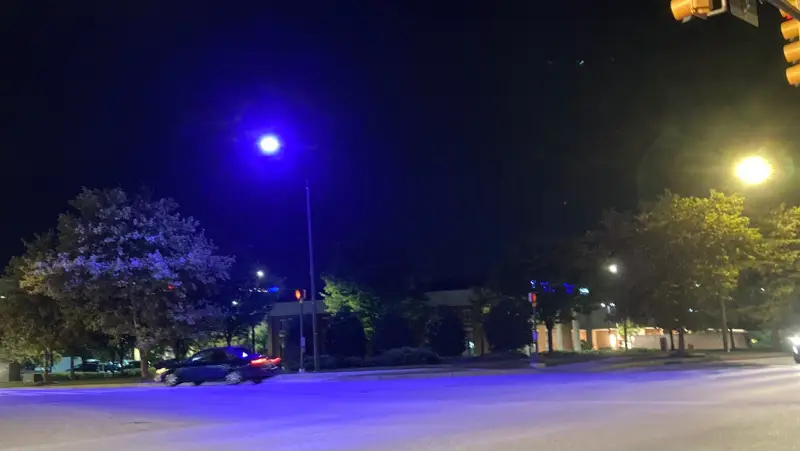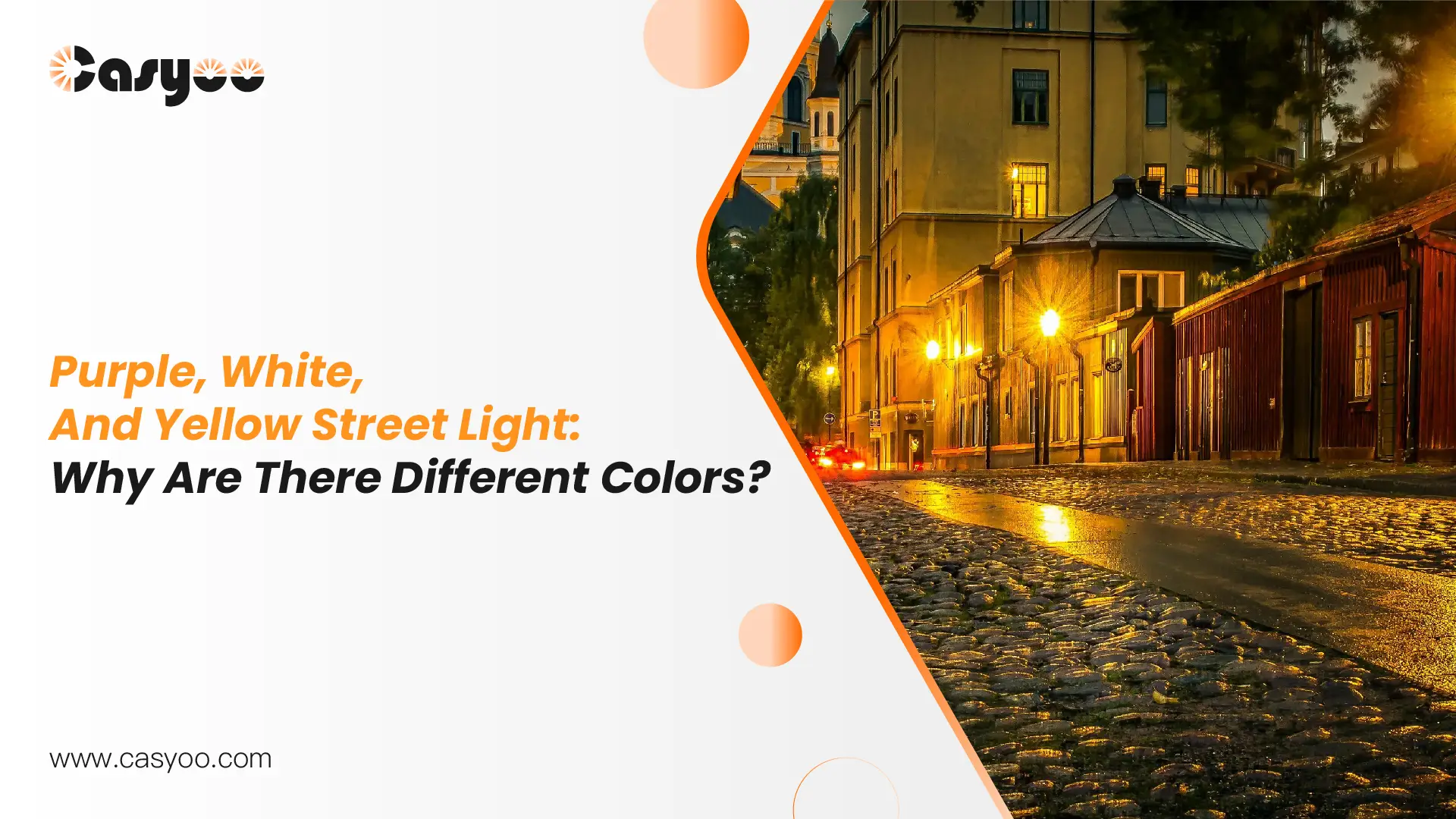For people from different regions, the street lights they see every day may have different colors. In some cities of America, there are purple street lights. In many other countries, yellow street lights light up the night. Recently, a large number of white street lights have replaced the yellow ones. Have you ever wonder why are there purple, white, and yellow street lights? Find the reasons why street lights have different colors in the following passage!
Why are some street lights purple?
There are three main ways to achieve white light using phosphors in LEDs. The first method is to coat a blue LED chip with yellow phosphor that can be excited by blue light. White light is created when the blue light from the chip and the yellow light from the phosphor combine. The second method is to coat the blue LED chip with green and red phosphors, and then combine the blue, green, and red light to create white light. The third method is to coat blue, green, and red phosphors on a purple or ultraviolet LED chip. Long-wave ultraviolet (370nm-380nm) or violet (380nm-410nm) light can stimulate phosphors to produce white light. However, the red and green phosphors needed by the second and third method have relatively low conversion efficiency. They cannot emit stable light, and have obvious light decay.
In addition to using phosphors to emit white light, white light can also be achieved by combining the light of built-in red, green, and blue chips. However, this method is more expensive and require careful adjustment. At present, most LED street lights use blue LED and yellow phosphor to emit white light, because blue light has smaller wavelength, higher energy and thus higher efficiency.
However, as time passes, the phosphors of street lights with low quality will be likely to fall off. Reasons for phosphors falling off include prolonged exposure to high temperature and high humidity environments, vibration, etc. When the phosphors fall off, the LED street lights will emit the original blue light, which looks purple because the wavelengths of these two light are similar.

Why are some street lights yellow?
At present, the most commonly used light source for street lights is high-pressure sodium lamps. When HPS street lights are working, sodium vapor is discharged in the arc tube to produce yellow light. Before the invention of LED lights, sodium lamps were the most efficient and energy-saving. The light efficiency of high-pressure sodium lamps is several times that of incandescent lamps, and they can last twenty times longer than incandescent lamps. Besides, their fog permeability is outstanding compared with other light sources. Furthermore, compared with other colors, people are relatively more sensitive to yellow light. Yellow street lights can also help beautify the city night view and make citizens feel more comfortable.

Why are some yellow street lights replaced by white street lights?
In some cities like Rome, many yellow HPS street lights have been replaced by white LED street lights. With the development of LED technology, more and more cities are considering using LED street lights for the following reasons:
①Energy saving: At present, the luminous efficiency of white LED can reach 110 Im/W, and it can be even higher with further development. Together with high-efficiency power supplies, high-power LED street lights can be 50% to 60% more energy-saving than the high-pressure sodium lamps. The huge potential of LED street lights in energy saving directly reduces the cost of public lighting projects.
② Low maintenance cost: In contrast to conventional high-pressure sodium lamps, which require replacement on average every year and a half, LED lights can last for 5 to 10 years without replacement.
③High CRI: LED has a high color rendering index (75-80), making the road surface look brighter and keep the drivers alert. High-pressure sodium lamps have a narrow spectrum and low CRI (20-40), so it is difficult to clearly identify pedestrians and vehicles on the road.
④Environmentally friendly: The production and recycling of LED street lights will not pollute the environment, and they do not produce electromagnetic interference. High-pressure sodium lamps contain mercury, argon and other elements, and the electronic ballasts will produce electromagnetic interference.
⑥Optional color temperature: LED street lights can be designed with different color temperature to meet the needs of different occasions. They can also achieve the same yellow lighting as sodium lamps.
⑥High LPD: LED road lamps not only have high lighting power density (LPD), but also produce no flicker, making them very suitable for road lighting.
To wrap up
Purple street lights are LED street lights that go wrong because the phosphor coating fall off. The government has replaced many of them and use new street lights with better performance. Yellow street lights are HPS street lights, which apply sodium to emit yellow light. This kind of light have high fog permeability and low CRI. Although they are the main type of street lights on the streets, these years many of them have been replaced with white LED street lights with higher efficiency, CRI, and other advantages.





